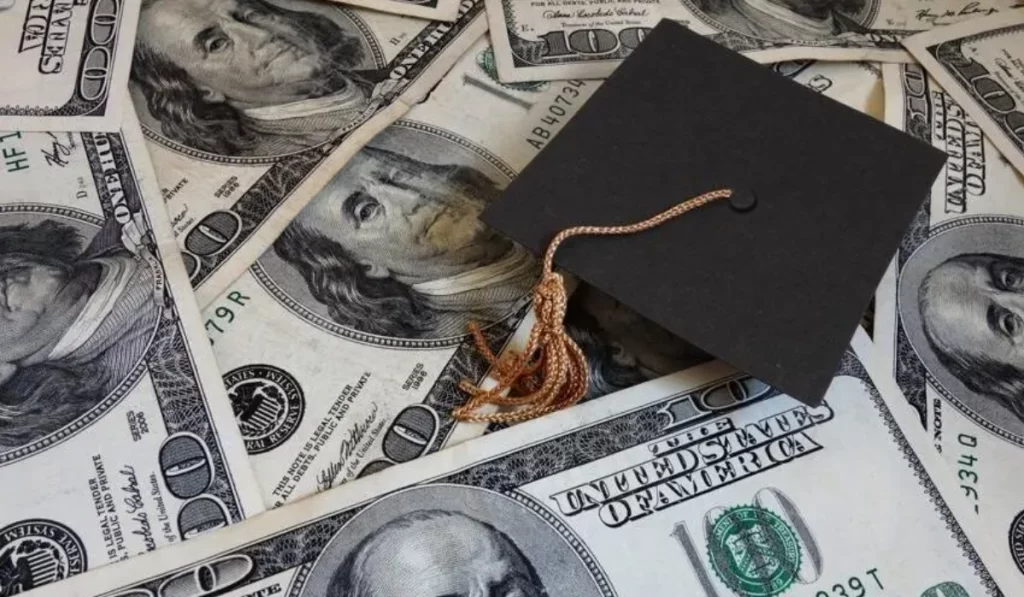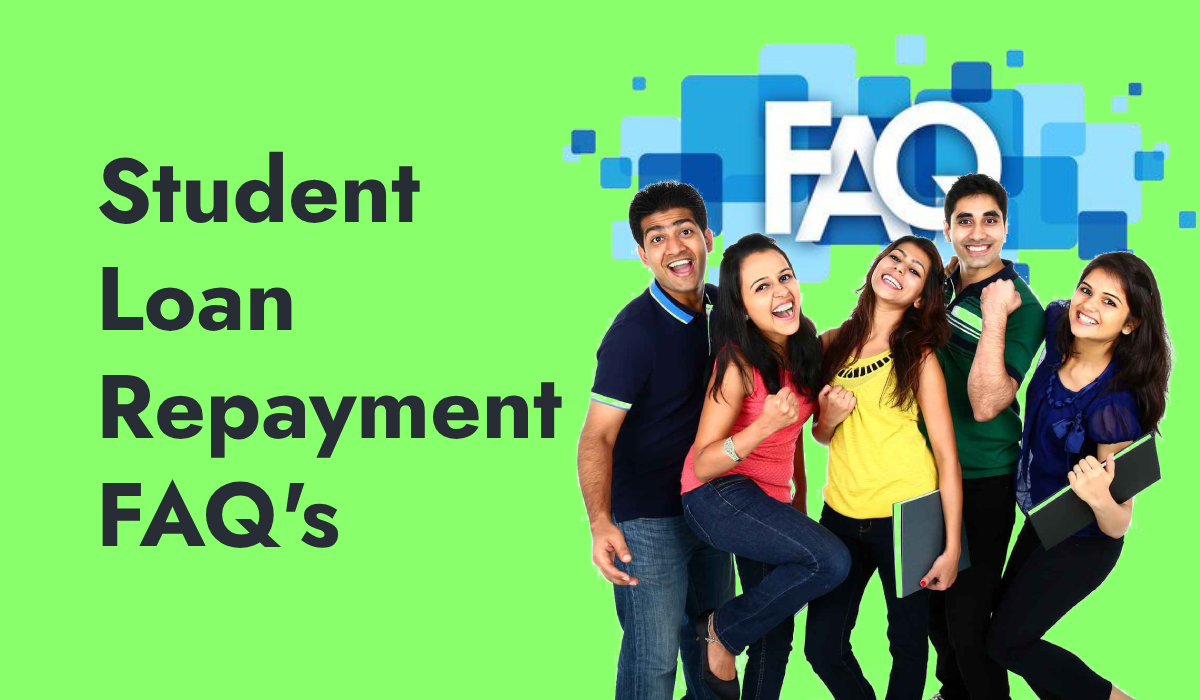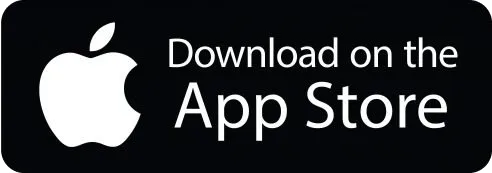The federal student loan repayment prohibition ended in October, meaning that 28 million students had to start making debt repayments after three years without receiving any payments.
You might be looking forward to your loan due dates whether this is your first time paying off debt or you’ve been doing it for years.
On the other hand, you may get ready for private student loans repayment by knowing when they will begin and what you can do to lower the amount loan amount you owe.

- Est APR = 4.89-9.04%
- MIn Credit Score = 680
- No fees.
4
editorial team. We score based on factors
that are helpful for consumers, such as
how it affects credit scores, the rates and
fees charged, the customer experience,
and responsible lending practices.
Understanding Student Loans
What are Federal Student Loans?
Federal student loans are provided by the U.S. Department of Education and are designed to help students pay for their education expenses. These loans come with fixed interest rates and offer various repayment options, including income-driven repayment plans and Public Service Loan Forgiveness.
One of the key advantages of federal student loans is their flexibility and borrower protections, which are often more favorable compared to private student loans.
For instance, most federal student loans offer deferment and forbearance options, allowing borrowers to temporarily pause payments during financial hardships. Additionally, federal student loans do not require a credit check for most borrowers, making them accessible to a wider range of students.

What are Private Student Loans?
Private student loans are offered by banks, credit unions, and online lenders to help students cover their education expenses. Unlike federal student loans, private student loans have varying interest rates, which can be either fixed or variable.
The terms and conditions of private student loans depend on the lender and the borrower’s credit history. While private student loans can be a good option for students who have exhausted their federal student loan options or need additional funding, they do not offer the same protections as federal student loans.
For example, most private student loan lenders typically do not provide income-driven repayment plans or public service loan forgiveness. Therefore, it’s crucial for students to carefully compare private student loans, find their loan lenders, and understand the terms before borrowing.
Understanding Student Loan
A student loan is a financial tool specifically designed to help individuals cover the costs of higher education. Federal student loans, offered by the U.S. Department of Education, are a popular choice for many students due to their numerous benefits.
These loans typically come with lower interest rates and more flexible repayment terms compared to private loans. Borrowers can use federal student loans to pay for a variety of education-related expenses, including tuition, fees, and living costs.
It’s crucial for borrowers to thoroughly understand the terms and conditions of their student loans to manage their debt effectively and avoid any financial pitfalls.
Applying for Student Loans
Applying for federal student loans begins with completing the Free Application for Federal Student Aid (FAFSA). This form is essential as it determines a borrower’s eligibility for federal student aid, including loans and grants.
Borrowers can submit their FAFSA online or by mail, providing necessary personal and financial information. Once processed, borrowers receive a Student Aid Report (SAR), which outlines their eligibility for federal student aid.
With this information in hand, borrowers can then apply for federal student loans through their school’s financial aid office, ensuring they have the federal financial aid and support needed for their education.


- Est APR = 4.89-9.04%
- MIn Credit Score = 680
- No fees.
4
editorial team. We score based on factors
that are helpful for consumers, such as
how it affects credit scores, the rates and
fees charged, the customer experience,
and responsible lending practices.
Repayment Options
When it comes to repaying student loans, borrowers have several options to choose from. Borrowers can choose between making full principal and interest payments, interest-only payments, or other customized repayment plans, providing flexibility to suit individual financial situations.
Income-driven repayment plans are particularly beneficial, as they cap monthly payments at a percentage of the borrower’s income, making it easier to manage debt.
There are various types of income-driven repayment plans, such as Income-Based Repayment (IBR) and Pay As You Earn (PAYE), each offering unique advantages. Alternatively, borrowers can opt for a standard repayment plan, which involves fixed monthly payments over a set period.
For those facing financial difficulties, options like deferment or forbearance can temporarily suspend or reduce payments, providing much-needed relief.
Managing Your Student Loans
Effective management of student loans is key to staying on top of payments and keeping track of debt. Borrowers can utilize online tools and resources, such as the National Student Loan Data System (NSLDS), to manage their loans.
The NSLDS is a comprehensive database that tracks federal student loan debt and provides detailed information on loan status and repayment options. Borrowers can access their loan information and make payments online through this system.
Staying organized and regularly monitoring loan information can help borrowers avoid default and ensure they manage their debt effectively.

Student Loan Relief and Forgiveness
For borrowers struggling to repay their loans, student loan relief and forgiveness programs can offer significant assistance. These programs provide temporary or permanent relief from loan payments and may even forgive part or all of the debt.
Notable programs include Public Service Loan Forgiveness (PSLF) and Teacher Loan Forgiveness, which offer loan forgiveness after a certain number of qualifying payments for those working in public service or teaching.
Additionally, borrowers can explore other debt management options, such as consolidation and refinancing, to simplify payments and potentially reduce interest rates.
These strategies can help borrowers manage their debt more effectively and achieve financial stability.
Different Types of Federal Student Loans
There are two main types of student loans: federal loans and private loans. Graduate student loans are essentially financial instruments for students pursuing advanced degrees, covering various educational expenses with flexible repayment plans and competitive interest rates.
Federal loans are provided by the government and usually have better interest rates and flexible repayment options. Variable rate loans, which start with lower interest rates that can increase over time, are another option to consider, though they come with the risk of fluctuating monthly payments.
Private loans, on the other hand, come from banks or other lenders, and they often have higher, variable interest rates. It’s a good idea to apply for federal loans first because they usually offer more benefits.
Paying Back Student Loans
Once you finish school or drop below a certain number of classes, you have to start paying back your student loans.
The amount you pay each month depends on the type of loan you have and how much money you borrowed.
Some loans let you make smaller payments if you don’t earn a lot of money right after school. It’s important to keep track of your loan payments so you don’t fall behind.

Loan Forgiveness Programs
Some people can have part or all of their student loans forgiven, which means they don’t have to pay the rest back.
This is often available for those working in certain jobs like teaching or public service. If you qualify, you can apply for programs that cancel your debt after making a certain number of payments.
Tips for Managing Student Loans from Private Student Loan Lenders
- Don’t borrow more money than necessary. Remember, you have to pay it all back with interest.
- Keep track of how much you owe and when your payments are due.
- If you’re having trouble making payments, look into different repayment plans or ask your lender for help.
Frequently Asked Questions
What is the monthly payment on a $10,000 student loan?
If you borrow $10,000, your monthly payment depends on how long you take to pay it back and the interest rate (the extra money you pay to borrow).
For example, if you pay it back in 10 years with a 5% interest rate, you would pay about $106 each month.
Is $50,000 in student loans a lot?
Yes, $50,000 is a lot of money to owe. Some jobs pay enough to handle it, but others don’t. It can take many years to pay off, depending on how much money you make at your job.
Who qualifies for student loan forgiveness in 2024?
In 2024, people who work in public service jobs like teachers, nurses, or for the federal government may get their student loans forgiven after making payments for 10 years. Some people on special payment plans might also have their loans forgiven after 20 or 25 years.
Is $200,000 in student loans a lot?
Yes, $200,000 is a very large amount of money to owe. It’s usually for people who go to school for a long time, like doctors or lawyers. Paying it back can be hard unless you have a high-paying job. Some people use special payment plans to make it easier.
Student Loan Repayment Begins
Federal student loan payments have been suspended since March 2020; no payments were expected, and interest rates on outstanding loans were momentarily set at zero percent.
The federal payment freeze ended on October 1, 2023, following multiple extensions, and borrowers are now required to resume loan repayment.

Related: Essential Guide to Apply For Federal Student Loans
FAQs Regarding Private Student Loans Repayment
When will student loan payments resume?
The federal student loan hold was gradually lifted. On September 1, 2023, interest on outstanding debts started to accrue.
Loan servicers reset accounts on October 1st, and payments were then due.
Find out when your first payment is due by contacting your loan servicer. Not all loans have due dates on the first of the month; instead, your payment due date varies depending on your loan terms and payment plan.
Related: Private Student Loans Of July 2024
What will happen to unpaid interest when payments restart?
Because interest rates on current federal student loans were fixed at zero per cent for the previous three years, interest did not accrue.
Now that the payment suspension has ended, variable interest rate rates will resume collecting at their previous levels.
The Federal Student Aid Office states that in order to guarantee that your loans are repaid on schedule, your servicer might need to raise your monthly payment when interest builds up on your account.
Your payment amount under an income-driven repayment (IDR) plan is determined only by your disposable income.
Am I eligible for the “on-ramp” period?
You are immediately qualified for the temporary on-ramp period if the payment freeze has affected any outstanding federal student loans.
The on-ramp period, which runs through September 30, 2024, mitigates the effects of late payments to give borrowers more time to become used to repayment. Missed, incomplete, or late payments won’t be reported to the credit agencies during this time.

How do I calculate what I owe?
Use the loan repayment simulator tool to determine how much you owe or what your payments would be under the various possible repayment plans. To see how much you owe and when your payments are due, you can also get in touch with your loan servicer.
Where do I make a payment on my student loans?
You will pay your loan servicer and the person you get in touch with when you have questions. The Consumer Financial Protection Bureau stated that approximately 40% of borrowers may have different loan servicers when repayment resumes, so it’s possible that your current loan servicer will be different from your previous one.
You must first ascertain which loans are handled by your loan servicers and who they are in order to manage your loans and make payments. You can accomplish this by logging into your account at studentaid.gov using your Federal Student Aid credentials. The Federal Student Aid Information Center’s number is 800-433-3243.
You may examine your loan data, set up automated payments, and create an online account once you’ve located your loan servicers.
What happens if you don’t pay your student loans?
Generally speaking, being in default on your federal student loans is a major problem with long-term repercussions. When you don’t make payments on your loan, the loan servicer has the right to report negative activity to credit bureaus, garnish your income, confiscate your tax refund, and send your debt to collections.
However, the government is assisting debtors in easing into repayment by offering a “on-ramp period,” understanding that they may need some time to adjust as they haven’t made payments in three years.
If they are able to, debtors are urged to make the necessary payments throughout this time. If, however, you are unable to make a payment on your student loans, the repercussions won’t be as dire.

- Est APR = 4.89-9.04%
- MIn Credit Score = 680
- No fees.
4
editorial team. We score based on factors
that are helpful for consumers, such as
how it affects credit scores, the rates and
fees charged, the customer experience,
and responsible lending practices.
Student Loan Repayment Options and Loan Forgiveness
After their loans have begun to be repaid, more borrowers are looking into their options for student loan forgiveness, which is still a popular topic. Programs for federal loan forgiveness or discharge may be available to you, depending on your loan and kind of employment.
Do I still qualify for the cancellation of my student loans?
Federal loan debtors may still be qualified for alternative loan forgiveness programs even after the Supreme Court invalidated President Biden’s plan to cancel student loans.
Programs for federal loan forgiveness
- Repayment based on income: After 20 to 25 years of payments, borrowers enrolled in IDR plans who still owe money may be eligible for discharge of the outstanding balance.
- Loan forgiveness for public service (PSLF). Employees of nonprofit organizations and government agencies that work full-time for at least ten years for qualified employers and complete 120 monthly payments under a qualifying payment plan may be eligible for loan forgiveness for up to 100% of their outstanding debt.
- Teacher Loan Forgiveness: Between $5,000 and $17,500 in loan forgiveness is available to educators who serve for five full academic years in a row in low-income schools or education service organizations.
Because of the government payment freeze, if you are on a forgiveness-eligible payment plan, you will automatically be credited for the three years of suspended payments toward the total amount of payments required to be eligible for debt forgiveness.
Understanding Student Loan
A student loan is a financial tool specifically designed to help individuals cover the costs of higher education. Federal student loans, offered by the U.S. Department of Education, are a popular choice for many students due to their numerous benefits.
Federal student loans typically have lower interest rates and more flexible repayment terms than private loans. Borrowers can use federal student loans to pay for a variety of education-related expenses, including tuition, fees, and living costs.
Borrowers must thoroughly understand the terms and conditions of their student loans to manage their debt effectively and avoid financial pitfalls.
Applying for Student Loans
Applying for federal student loans begins with completing the Free Application for Federal Student Aid (FAFSA). This form is essential as it determines a borrower’s eligibility for federal student aid, including loans and grants. A borrower’s credit history plays a significant role in determining the interest rates and eligibility for private student loans, with a strong credit history leading to better federal student aid options, loan interest rates and conditions.
Borrowers can submit their FAFSA online or by mail, providing necessary personal and financial information. Many private student loan lenders do not charge origination fees, making them an attractive option compared to federal student loans, which may have such fees. Once processed, borrowers receive a Student Aid Report (SAR), which outlines their eligibility for federal and private student loans require other aid.
With this information in hand, borrowers can then apply for federal student loans through their school’s financial aid office, ensuring they have the financial support needed for their education.
Eligibility Requirements
To be eligible for a private student loan, students typically need to meet certain requirements, such as:
- Being enrolled at least half-time in a degree-granting program at an eligible school
- Being a U.S. citizen or eligible non-citizen
- Having a valid Social Security number
- Having a good credit history or a creditworthy co-signer
- Meeting the lender’s income and debt-to-income ratio requirements
These criteria ensure that the borrower has the ability to repay the loan and that the lender can assess the risk involved in lending the loan term well.
How to Apply for a Student Loan
To apply for a private student loan, students can follow these steps:
Research and Compare: Start by researching and comparing the best private student loan and lenders to find the best interest rate and repayment terms for your needs. Look for lenders that offer favorable terms and have good customer reviews.
Check Credit Score:
Check your credit score and history to determine if you need a co-signer. A higher credit score can help you secure better interest rates.
Gather Documents:
Gather the required documents, such as proof of income, employment, and school enrollment. Having these documents ready can streamline the application process.
Fill Out Application:
Fill out the lender’s loan application and form and provide the required information. Be thorough and accurate to avoid delays.
Review and Sign:
Review the loan agreement carefully, which will outline the terms and conditions of the loan. Make sure you understand all the details before signing.
Receive Funds:
Once approved, the loan funds will be disbursed directly to your school or to you, depending on the lender’s policy.
It’s essential to note that private student loans work differently than federal student loans, and students should carefully review the terms and conditions before applying. Additionally, students should consider their other financial aid options, including grants, scholarships, and federal student loans, before turning to private student loans. This approach ensures that they are making the most cost-effective decision for their education financing.
Repayment Options
When it comes to repaying student loans, borrowers have several options to choose from. Income-driven repayment plans are particularly beneficial, as they cap monthly payments at a percentage of the borrower’s income, making it easier to manage debt.
There are various types of income-driven repayment plans, such as Income-Based Repayment (IBR) and Pay As You Earn (PAYE), each offering unique advantages.
Alternatively, borrowers can opt for a standard repayment plan, which involves fixed monthly payments over a set period. For those facing financial difficulties, options like deferment or forbearance can temporarily suspend or reduce payments, providing much-needed relief.
Managing Your Student Loans
Effective management of student loans is key to staying on top of payments and keeping track of debt. Borrowers can utilize online tools and resources, such as the National Student Loan Data System (NSLDS), to manage their loans.
The NSLDS is a comprehensive database that tracks federal student loan debt and provides detailed information on loan status and repayment options. Borrowers can access their loan information and make payments online through this system. Staying organized and regularly monitoring loan information can help borrowers avoid default and ensure they manage their debt effectively.
Student Loan Relief and Forgiveness
For borrowers struggling to repay their loans, student loan relief and forgiveness programs can offer significant assistance. These programs provide temporary or permanent relief from loan payments and may even forgive part or all of the debt.
Notable programs include Public Service Loan Forgiveness (PSLF) and Teacher Loan Forgiveness, which offer loan forgiveness after a certain number of qualifying payments for those working in public service or teaching.
Additionally, borrowers can explore other debt management options, such as consolidation and refinancing, to simplify payments and potentially reduce interest rates. These strategies can help borrowers manage their debt more effectively and achieve financial stability.
Different Types of Student Loans
There are two main types of student loans: federal loans and private loans. Federal loans are provided by the government and usually have better interest rates and flexible repayment options.
When looking for the best private student loans, it’s important to compare multiple lenders,, interest rates, and loan terms to find the most suitable option for your financial needs.
Private loans, on the other hand, come from banks or other lenders, and they often have higher interest rates. It’s a good idea to apply for federal loans first because they usually offer more benefits.
Paying Back Student Loans
Once you finish school or drop below a certain number of classes, you have to start paying back your student loans.
The amount you pay each month depends on the type of loan you have and how much money you borrowed. Some loans let you make smaller payments if you don’t earn a lot of money right after school. It’s important to keep track of your loan payments so you don’t fall behind.
Loan Forgiveness Programs
Some people can have part or all of their student loans forgiven, which means they don’t have to pay the rest back. This is often available for those working in certain jobs like teaching or public service. If you qualify, you can apply for programs that cancel your debt after making a certain number of payments.
Tips for Managing Student Loans
- Don’t borrow more money than necessary. Remember, you have to pay it all back with interest.
- Keep track of how much you owe and when your payments are due.
- If you’re having trouble making payments, look into different repayment plans or ask your lender for help.
Frequently Asked Questions
What is the monthly payment on a $10,000 student loan?
If you borrow $10,000, your monthly payment depends on minimum loan amount, how long you take to pay it back and the interest rate (the extra money you pay to borrow). For example, if you pay it back in 10 years with a 5% interest rate, you would pay about $106 each month.
Is $50,000 in student loans a lot?
Yes, $50,000 is a lot of money to owe. Some jobs pay enough to handle it, but others don’t. It can take many years to pay off, depending on how much money you make at your job.
Who qualifies for student loan forgiveness in 2024?
In 2024, people who work in public service jobs like teachers, nurses, or for the government may get their student loans forgiven after making payments for 10 years. Some people on special payment plans might also have their loans forgiven after 20 or 25 years.
Is $200,000 in student loans a lot?
Yes, $200,000 is a very large amount of money to owe. It’s usually for people who go to school for a long time, like doctors or lawyers. Paying it back can be hard unless you have a high-paying job. Some people use special payment plans to make it easier.






